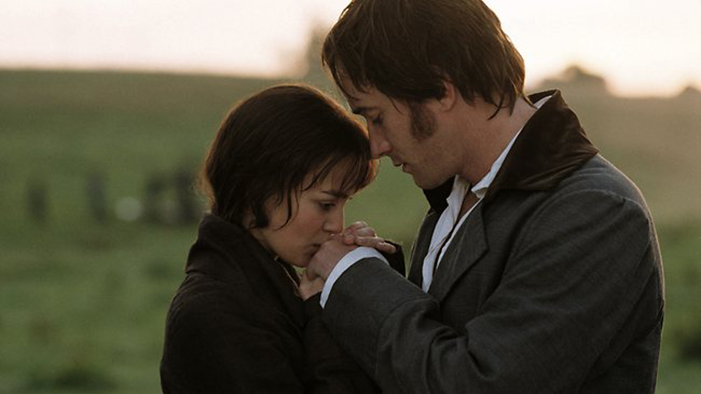Summary
Keats’s speaker opens the poem with an address to the goddess Psyche, urging her to hear his words, and asking that she forgive him for singing to her her own secrets. He says that while wandering through the forest that very day, he stumbled upon “two fair creatures” lying side by side in the grass, beneath a “whisp’ring roof” of leaves, surrounded by flowers. They embraced one another with both their arms and wings, and though their lips did not touch, they were close to one another and ready “past kisses to outnumber.” The speaker says he knew the winged boy, but asks who the girl was. He answers his own question: She was Psyche.
In the second stanza, the speaker addresses Psyche again, describing her as the youngest and most beautiful of all the Olympian gods and goddesses. He believes this, he says, despite the fact that, unlike other divinities, Psyche has none of the trappings of worship: She has no temples, no altars, no choir to sing for her, and so on. In the third stanza, the speaker attributes this lack to Psyche’s youth; she has come into the world too late for “antique vows” and the “fond believing lyre.” But the speaker says that even in the fallen days of his own time, he would like to pay homage to Psyche and become her choir, her music, and her oracle. In the fourth stanza, he continues with these declarations, saying he will become Psyche’s priest and build her a temple in an “untrodden region” of his own mind, a region surrounded by thought that resemble the beauty of nature and tended by “the gardener Fancy,” or imagination. He promises Psyche “all soft delight” and says that the window of her new abode will be left open at night, so that her winged boy—”the warm Love”—can come in.
Form
The four stanzas of “Ode to Psyche” are written in the loosest form of any of Keats’s odes. The stanzas vary in number of lines, rhyme scheme, and metrical scheme, and convey the effect of spontaneous rhapsody rather than considered form. Lines are iambic, but vary from dimeter to pentameter; the most common rhymes are in alternating lines (ABAB), but there are abundant exceptions, and there are even unrhymed lines. (“Hours,” at the end of line ten in the third stanza, is an example.) The number of lines in a stanza is simply organic and irregular; stanza one has
In the first stanza, every line is written in iambic pentameter except lines
The second stanza is shorter and much simpler. It follows a strictly alternating rhyme scheme: ABAB CDCD EFEF, and the only irregularities are metrical, with two trimeters, lines
The final stanza has trimeters in lines
It is very important to note that the large number of irregularities and long algebraic rhyme schemes in this ode should not be taken as signs of great formal complexity. “Ode to Psyche” is much more freely and loosely written than any of Keats’s other odes, and the fact that it is difficult to schematize testifies to this spontaneity and freedom rather than to an elaborate preconceived formal scheme. The other odes, though their stanzas and rhyme schemes are easier to describe in terms of form, are much more strictly ordered and make much deeper use of strict form than does the “Ode to Psyche.” In fact, there is little to gain from long formal analysis of the Psyche ode; its form is better understood in the loose and general terms in which it seems to have been planned.
Analysis
With its loose, rhapsodic formal structure and its extremely lush sensual imagery, the “Ode to Psyche” finds the speaker turning from the delights of numbness (in “Ode on Indolence”) to the delights of the creative imagination—even if that imagination is not yet projected outward into art.
The basis for the story of “Ode to Psyche” is a famous myth. Psyche was the youngest and most beautiful daughter of a king. She was so beautiful that Aphrodite, the goddess of love and beauty, was jealous of her; she dispatched her son, Eros, the god of love (the Cupid of Roman mythology and the “winged boy” of Keats’s poem) to punish Psyche for being so beautiful. But Eros was so startled by Psyche’s beauty that he pricked himself with his own arrow and fell in love with her. Eros summoned Psyche to his palace, but he remained invisible to her, coming to her only and night and ordering her never to try to see his face. One night, Psyche lit a lamp in order to catch a glimpse of her lover; but Eros was so angry with her for breaking his trust that he left her. Psyche was forced to perform a number of difficult tasks to placate Venus and win back Eros as her husband. The word “psyche” is Greek for “soul,” and it is not difficult to imagine why Keats would have found the story attractive—the story of the woman so beautiful that Love fell in love with her.
Additionally, as Keats observed, the myth of Psyche was first recorded by Apuleius in the second century A.D., and is thus much more recent than most myths (this is why Keats refers to Psyche as the “latest born” of “Olympus’s faded hierarchy”). It is so recent, in fact, that Psyche was never worshipped as a real goddess. That slight is what compels Keats’s speaker to dedicate himself to becoming her temple, her priest, and her prophet, all in one. So he has found a way to move beyond the numbness of indolence and has discovered a goddess to worship. To worship Psyche, Keats summons all the resources of his imagination. He will give to Psyche a region of his mind, where his thoughts will transform into the sumptuous natural beauties Keats imagines will attract Psyche to her bower in his mind. Taken by itself, “Ode to Psyche” is simply a song to love and the creative imagination; in the full context of the odes, it represents a crucial step between “Ode on Indolence” and “Ode to a Nightingale”: the speaker has become preoccupied with creativity, but his imagination is still directed toward wholly internal ends. He wants to partake of divine permanence by taking his goddess into himself; he has not yet become interested in the outward imaginative expression of art.


 payment page
payment page



